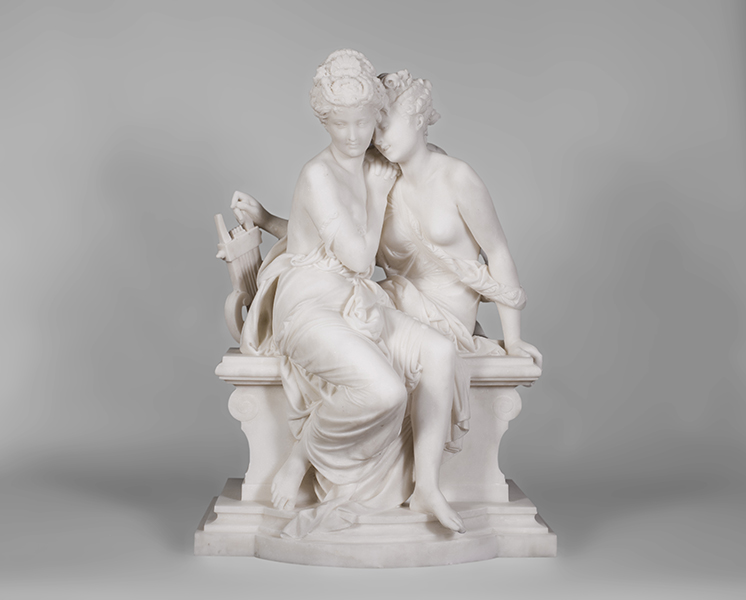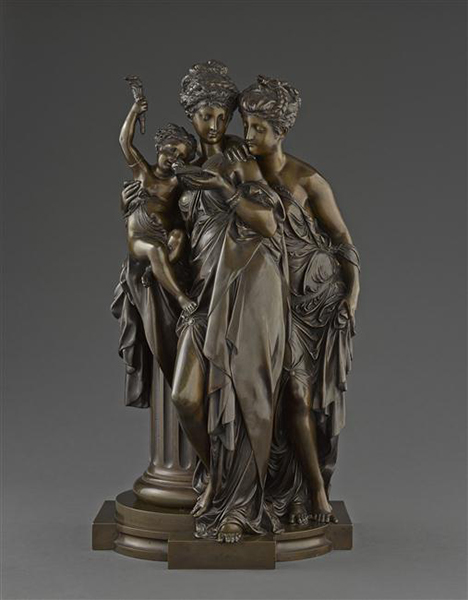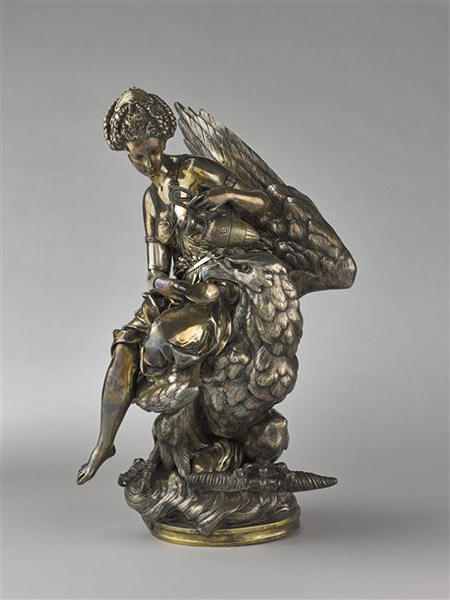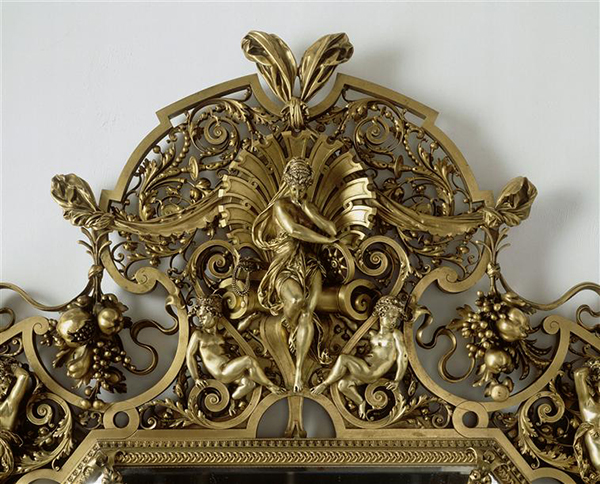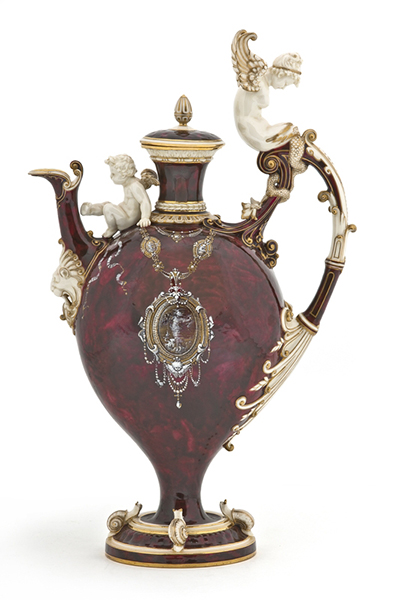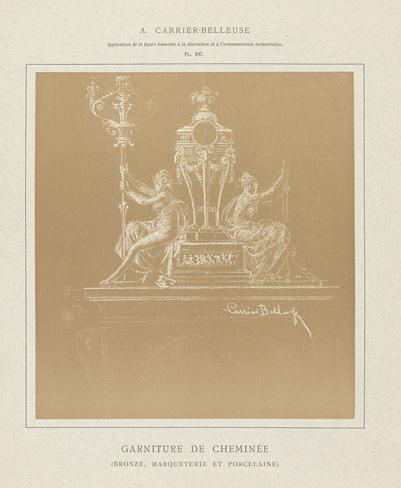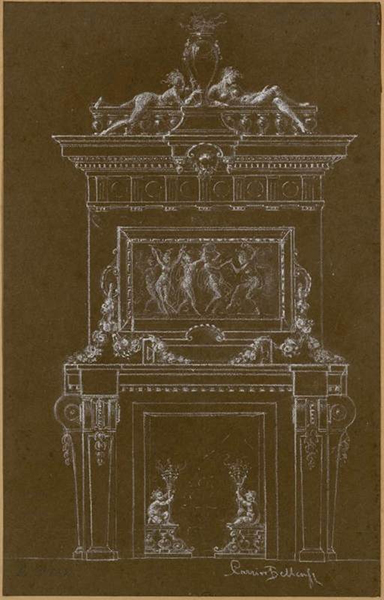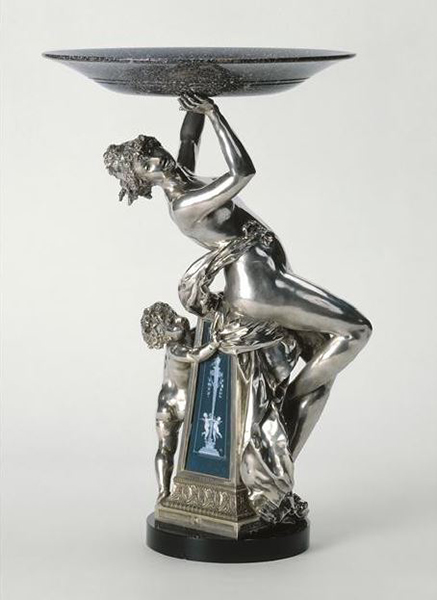Albert-Ernest Carrier-Belleuse
Download PDFAlbert-Ernest Carrier de Belleuse as known as Carrier-Belleuse (1824 - 1887) is the most prolific sculptor of the Second Empire, who touched all areas of sculpture, from porcelain of Sevres to monumental sculpture of marble, by way of a large production of terracotta and bronze statuettes.
Beginning at the age of thirteen at chiseler Beauchery’s workshop, Carrier-Belleuse learned from different goldsmiths, and was marked by the importance of the decorative arts. He worked quickly with Ferdinand Barbedienne and Deniere, the greatest bronze craftsmen of the century, in the realization of decorative objects, such as candelabra and fireplace garniture.
Fatherless orphan and protege of the Arago family, he obtained an official commission in 1848, a statue of the muse Rachel in gilded plaster. In 1863, his Bacchant in marble shown at the Salon is bought by Napoleon III, confirming his importance in the Second Empire. It was placed in the garden of the Tuileries from 1872 until 1984. He hence made the decoration of several prestigious buildings, in the Louvre, the Theatre of the Renaissance, on the pediment of the Bank of France, or at the Opera House of Palais Garnier, of which he supplied the two torches of the grand staircase.
As early as 1855, Carrier-Belleuse opened a workshop at the rue de la Tour d'Auvergne, 15, which welcomed many pupils, including Jospeh Cheret, Jules Dalou, and especially the great Auguste Rodin, who greatly benefited from this apprenticeship, and made his portrait in bust. From this workshops come a prodigious number of sculptures, which earns Carrier-Belleuse to be called a "sculpting machine" (Edouard Lockroy, L'Artiste, 1865).
Carrier-Belleuse was probably best known for his production of statuettes and busts, as he realized many portraits of the personalities of his time, such as Theophile Gautier, Honore Daumier and Eugene Delacroix. He also sculpts portraits of some official figures with several busts of Napoleon III, and an important statue of the Countess of Castiglione. On the day following the ball of the 9th of February 1863 at the Tuileries, she wanted to make a portrait of her in her costume of Queen of Etruria, in a dignified pose, in order to counteract the slanders she had been the target of.
Carrier-Belleuse is also a great admirer of the Renaissance and the 18th century, from which he sculpts portraits of Shakespeare or Jean-Jacques Rousseau. He is inspired in his works by Renaissance art, especially the art from Fontainebleau. But he is also often considered as a new Clodion, 18th century sculptor of terracotta statuettes, for many gallant subjects and elegant busts of young women, such as the Bust of a young woman wearing a diadem, preserved in the Orsay Museum.
Thus, the monumental mirror exhibited by Barbedienne at the World’s Fair of 1867 , the true centerpiece of the stand, which emphasizes the pre-eminence of French skills in ornamental bronze, is decorated with characters by Carrier-Belleuse, in a Benvenuto Cellini manner.
Being one of the founding members of the Central Union of Fine Arts applied to Industry, now the Decorative Arts, his work is in keeping with the motto of this institute: "Beautiful in Useful". At the end of his career, he became art director of the Manufacture de Sevres, where he invented many designs with small sculptures, such as the Buire de Blois, at which Rodin worked. Finally, at the end of his life, a collection of drawings by Carrier-Belleuse was published, showing his involvement in the diffusion of beauty by the objects of everyday life: Application of the human figure to industrial decoration and ornamentation, 1884.
The son of Albert-Ernest Carrier-Belleuse, Louis-Robert Carrier-Belleuse, also became a renowned artist of decorative arts. Trained as a painter, and also a sculptor like his father, he mainly worked in ceramics, becoming art director of the Choisy-le-Roi pottery works after 1892.









